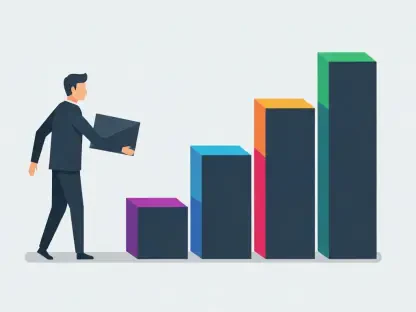As the global payments landscape continues to transform at a breathtaking pace, recent developments highlight both groundbreaking innovations and persistent hurdles that are reshaping how money moves across borders and between accounts. This month has brought into sharp focus a dynamic interplay of technology and regulation, with financial institutions, tech giants, and central banks navigating a complex terrain of opportunity and risk. From cutting-edge fraud prevention measures to the rise of digital currencies and global wallet integrations, the industry is witnessing a surge of creativity aimed at enhancing accessibility and security. Yet, alongside these advancements, challenges such as regulatory delays and vulnerabilities to scams underscore the delicate balance needed to foster trust and stability. This exploration delves into the most significant stories driving the payments sector, offering a comprehensive look at what’s propelling progress and what continues to pose obstacles in this ever-evolving field.
Advancements in Fraud Prevention Technology
Significant strides in combating payment fraud have emerged as a dominant theme in the industry this month, with institutions rolling out sophisticated tools to protect consumers. A standout initiative is the Confirmation of Payee (CoP) scheme adopted by Australian banks, representing a substantial $100 million investment to curb scam losses through name-matching technology. Even as scam incidents show a downward trend in the region, this proactive approach signals a commitment to staying ahead of fraudsters. The technology ensures that payee details match before transactions are completed, reducing the risk of funds being sent to unintended recipients. This move reflects a global urgency to fortify digital payment systems against evolving threats, prioritizing consumer safety in an era where transactions increasingly occur online. As more countries observe the outcomes of such implementations, the potential for wider adoption of similar measures grows, setting a new standard for secure financial interactions across various markets.
Parallel to Australia’s efforts, the UK has seen Mastercard introduce A2A Protect, a service targeting the staggering £592 million lost to account-to-account payment fraud annually. This innovative solution addresses Authorized Push Payment (APP) fraud by providing real-time risk assessment and establishing standardized dispute resolution processes. The launch underscores a growing consensus among industry players that robust mechanisms are essential to safeguard users as digital payments become ubiquitous. Beyond immediate fraud prevention, A2A Protect aims to build long-term trust in payment ecosystems by ensuring consistency in handling disputes, a critical factor for consumer confidence. This development highlights how technology can bridge gaps in security, offering a blueprint for other regions grappling with similar challenges. As fraud tactics become more sophisticated, such initiatives demonstrate the industry’s resolve to adapt and protect, fostering a safer environment for all stakeholders involved in digital transactions.
Digital Currencies and Alternative Payment Methods
The exploration of digital currencies and alternative payment solutions has gained momentum, reflecting a shift toward more inclusive and borderless financial systems. The Bank of England’s reevaluation of a digital pound illustrates a cautious yet pivotal stance, with indications that it might step back if private sector innovations prove sufficient. This measured approach contrasts with the European Central Bank’s accelerated drive toward a digital euro, spurred by geopolitical factors and a desire for financial sovereignty. These differing strategies reveal a fragmented global landscape for central bank digital currencies (CBDCs), where priorities and timelines vary widely. The debate over public versus private solutions in this space continues to shape policy, with implications for how digital money might integrate into everyday transactions. As central banks weigh risks and benefits, their decisions will likely influence the pace at which digital currencies become mainstream across diverse economies.
Meanwhile, private sector players are pushing boundaries with bold integrations of digital wallets and cryptocurrency payments. PayPal has made waves by launching PayPal World, a platform designed to connect nearly two billion users through partnerships with services like Venmo and UPI, alongside a ‘Pay with Crypto’ feature for US businesses. Supporting over 100 cryptocurrencies, this service aims to simplify cross-border commerce by converting crypto to fiat or stablecoins, slashing transaction fees in the process. Such advancements signal a growing acceptance of alternative payment methods, catering to a demand for seamless and cost-effective solutions. By bridging traditional and digital finance, these efforts are redefining transaction ease, particularly for international trade. As adoption spreads, the impact on global payment accessibility could be profound, potentially reshaping how businesses and consumers interact in a digitally connected marketplace.
Regulatory Hurdles and Systemic Vulnerabilities
Regulatory challenges remain a significant barrier to fintech growth, as evidenced by ongoing tensions in the UK over Revolut’s delayed full banking license. Despite securing a provisional license last year, progress has stalled, caught in a dispute between Bank of England Governor Andrew Bailey and Chancellor Rachel Reeves. This deadlock highlights broader debates about balancing innovation with financial stability, a concern that resonates across jurisdictions. The friction illustrates how regulatory oversight can slow the momentum of fintech companies eager to expand services, even as they drive competition and consumer choice. As the industry evolves, finding harmony between fostering innovation and ensuring systemic integrity remains a critical task for policymakers. The outcome of such disputes could set precedents for how other fintechs navigate regulatory landscapes, influencing the speed and direction of financial sector transformation.
Adding to the complexity are stark reminders of systemic vulnerabilities, exemplified by a $17 million scam in New York City tied to a glitch in a youth job program card system. Amplified by social media platforms like TikTok, this incident saw unauthorized ATM withdrawals spiral out of control, exposing flaws in payment system design. Such events underscore the urgent need for secure infrastructure, especially as digital payment adoption surges. The fallout serves as a cautionary tale for institutions worldwide, emphasizing that innovation must be paired with rigorous security measures to prevent exploitation. As scams evolve alongside technology, addressing these gaps becomes paramount to maintaining public trust. This incident, alongside ongoing fraud prevention efforts, reinforces the necessity of vigilance and adaptability in safeguarding financial systems against both technological and human-driven risks.
Reflecting on a Transformative Period
Looking back, the payments sector experienced a defining moment this month, marked by remarkable technological strides and persistent challenges in security and governance. Initiatives like Australia’s Confirmation of Payee scheme and Mastercard’s A2A Protect showcased a determined push to combat fraud, while PayPal’s global wallet and crypto payment integrations hinted at a future of seamless, inclusive transactions. Yet, regulatory delays for fintechs like Revolut and alarming scams in digital systems revealed the complexities of aligning innovation with stability. Moving forward, stakeholders must prioritize collaborative frameworks that address vulnerabilities while accelerating the adoption of secure, user-friendly payment solutions. Investing in robust infrastructure and harmonizing regulatory approaches across regions could pave the way for a more resilient ecosystem. As the industry continues to evolve, these lessons from recent developments offer a roadmap for balancing progress with protection, ensuring that the future of payments remains both innovative and trustworthy.









